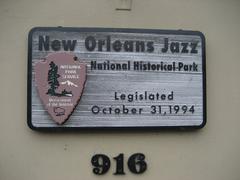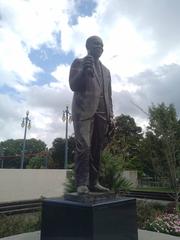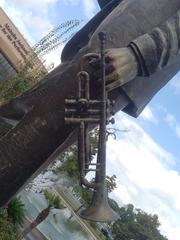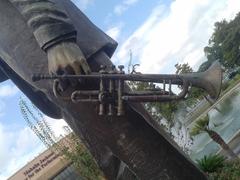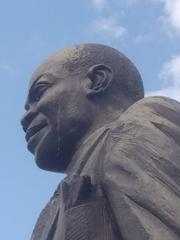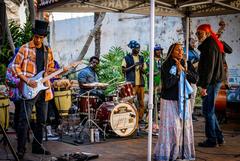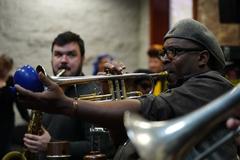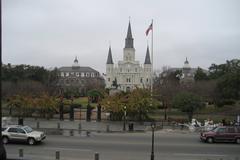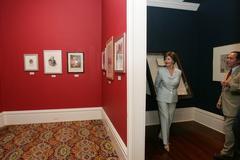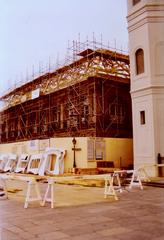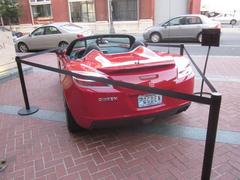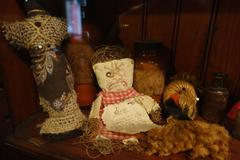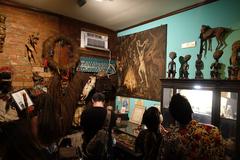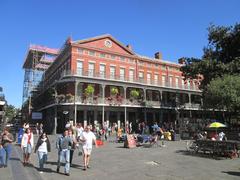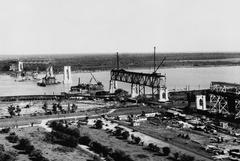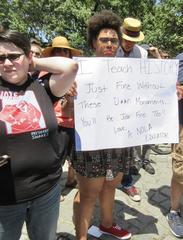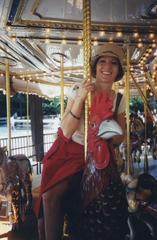
Visiting Shops of The Colonnade in New Orleans: A Complete Guide
Date: 01/08/2024
Introduction
The Shops of The Colonnade, located in the historic French Market district of New Orleans, offer a unique blend of history, culture, and commerce. Established in 1782, the French Market is one of the oldest public markets in the United States, reflecting the city’s rich heritage and diverse cultural influences. Over the centuries, the market has evolved from a simple trading post to a bustling marketplace that includes a variety of shops, dining options, and cultural events (French Market History). Visitors can explore a myriad of stores, each offering unique products that capture the spirit of New Orleans, from local crafts and specialty foods to fine art and souvenirs. The market’s architectural landscape, which has survived numerous hurricanes and undergone significant renovations, stands as a testament to the resilience and enduring charm of New Orleans. Whether you’re a history buff, a foodie, or a casual tourist, The Shops of The Colonnade provide an immersive experience that showcases the vibrant culture and dynamic history of the city.
Table of Contents
- Early Beginnings and Evolution
- Architectural Developments
- Mid-19th Century Expansion
- 20th Century Modernization
- Late 20th Century Developments
- Financial Challenges and Resilience
- Visitor Information
- Cultural Significance
- Events and Special Activities
- Photographic Spots
- FAQ Section
Early Beginnings and Evolution
The Shops of The Colonnade, located within the historic French Market district of New Orleans, have a rich history that dates back to the late 18th century. The French Market itself is one of the oldest public markets in the United States, with its origins tracing back to 1782 when the Spanish colonial government established the first formal market building on the corner of Chartres and Dumaine Streets. This initial structure was later relocated to Decatur Street between St. Ann and Dumaine Streets in 1790 (French Market History).
Architectural Developments
The market’s architectural landscape has undergone significant changes over the centuries. In 1813, a Meat Market building was constructed by Gurlie and Guillot, based on designs by City Surveyor Jacques Tanesse. This building has remarkably survived numerous hurricanes and remains a testament to the market’s resilience (French Market History). In 1822, a Vegetable Market was designed by the new City Surveyor, Joseph Pilie, and constructed in phases by Jean Felix Pinson, with completion in 1830. The area between the Meat and Vegetable Markets saw the addition of several buildings known as the Red Stores around 1833, further expanding the market’s footprint (French Market History).
Mid-19th Century Expansion
The mid-19th century marked a period of significant expansion for the French Market. A bazaar-type market emerged between the Meat and Vegetable Markets, leading to the construction of a new Bazaar Market facility in 1872 to accommodate this growing activity. This period also saw the market becoming a central hub for commerce and community gatherings, solidifying its role in the cultural fabric of New Orleans (French Market History).
20th Century Modernization
The early 20th century brought about modernization efforts to revitalize the French Market. In 1932, the city proposed a new franchise agreement for the market’s operation and improvement, leading to the formation of the French Market Corporation. By 1934, the Corporation had secured the franchise and embarked on extensive rehabilitation projects. Architectural plans by Sam Stone and Co. and financing through a joint effort involving area businessmen, the City government, the Orleans Levee Board, and the Public Works Administration led to significant renovations starting in 1936. This included the demolition of the Bazaar Market remains and the construction of a new Fruit and Vegetable Market, as well as a wholesale fish market shed along the levee (French Market History).
Late 20th Century Developments
The latter half of the 20th century saw further developments aimed at enhancing the market’s appeal and functionality. In 1973, the French Market Corporation financed a second major renovation through the sale of $3.2 million in revenue bonds. This project included extensive renovations of existing structures, the demolition of the wholesale fish market, and the construction of new buildings such as the Halles des Cuisines and a new Red Stores complex. Despite financial constraints, the Farmers’ Market was dedicated on April 1, 1975 (French Market History).
Financial Challenges and Resilience
The French Market Corporation has faced mixed financial success over the years. The opening of a new parking lot in 1977 and the Corporation’s takeover of the popular Flea Market operation in 1979 helped improve profitability. However, the additional responsibilities for custodial and security services in Oscar Dunn Park, the Moonwalk, and Jackson Square required significant city appropriations to support these new tasks (French Market History).
Visitor Information
Visiting Hours and Tickets
The Shops of The Colonnade operate daily with retail shops open from 10 am to 5 pm, and the farmers’ and flea markets from 10 am to 6 pm. Admission to the market is free, but certain events or guided tours may require tickets. Tickets for special events can be purchased online through the French Market’s official website, or at designated kiosks within the market.
Travel Tips and Nearby Attractions
Located in the heart of the French Quarter, The Shops of The Colonnade are easily accessible. Visitors can enjoy nearby attractions such as Jackson Square, the Cabildo, and the St. Louis Cathedral. For a more immersive experience, consider taking a guided tour that includes historical insights and culinary tastings from local vendors.
Accessibility
The French Market is wheelchair accessible and offers amenities including restrooms and seating areas. Parking is available in nearby lots, and public transportation options include the Riverfront streetcar line.
Cultural Significance
The Shops of The Colonnade and the broader French Market district hold immense cultural significance for New Orleans. They serve as a living museum of the city’s diverse heritage, reflecting the influences of Spanish, French, African, and Caribbean cultures. The market is not just a place for commerce but also a vibrant community space where locals and tourists alike can experience the unique flavors, sounds, and traditions of New Orleans.
Events and Special Activities
Throughout the year, The Shops of The Colonnade host numerous events and festivals, including the French Quarter Festival and the Creole Tomato Festival. These events offer unique opportunities to explore the market’s vibrant culture, with live music, local crafts, and culinary delights.
Photographic Spots
Visitors will find plenty of picturesque spots within the French Market. The iconic archways, bustling vendor stalls, and the scenic backdrop of the Mississippi River make for perfect photo opportunities. Early morning visits offer the best light and fewer crowds.
FAQ Section
Q: What are the visiting hours for The Shops of The Colonnade? A: Retail shops are open from 10 am to 5 pm, and the farmers’ and flea markets from 10 am to 6 pm daily.
Q: Is there an entrance fee to The Shops of The Colonnade? A: Admission to the market is free. However, certain events or guided tours may require tickets.
Q: Where can I purchase tickets for special events? A: Tickets can be purchased online through the French Market’s official website or at designated kiosks within the market.
Q: Are the Shops of The Colonnade accessible for people with disabilities? A: Yes, the market is wheelchair accessible and offers amenities such as restrooms and seating areas.
Q: What nearby attractions can I visit? A: Nearby attractions include Jackson Square, the Cabildo, and the St. Louis Cathedral.
Conclusion
Visiting The Shops of The Colonnade in New Orleans is more than just a shopping trip; it’s an immersive journey through time and culture. The market’s rich history, dating back to the late 18th century, and its evolution into a vibrant hub of commerce and community, offer a unique glimpse into the diverse heritage of New Orleans. From the architectural marvels that have withstood the test of time to the eclectic mix of shops and dining options, there is something for everyone to enjoy. The market also plays a significant role in the cultural fabric of the city, hosting numerous events and festivals that celebrate the local traditions and flavors. Whether you’re exploring the picturesque spots for a perfect photo, indulging in local delicacies, or shopping for unique souvenirs, The Shops of The Colonnade provide a rich, multifaceted experience that captures the essence of New Orleans. Plan your visit today and discover why this historic market remains a beloved destination for both locals and tourists alike (French Market History).
References
- French Market History, 2023, French Market Corporation (French Market History)
- French Market Corporation, 2023, French Market Corporation (French Market Corporation)
- New Orleans Visitor Guide 2024, 2023, New Orleans Official Tourism Website (New Orleans Visitor Guide 2024)
